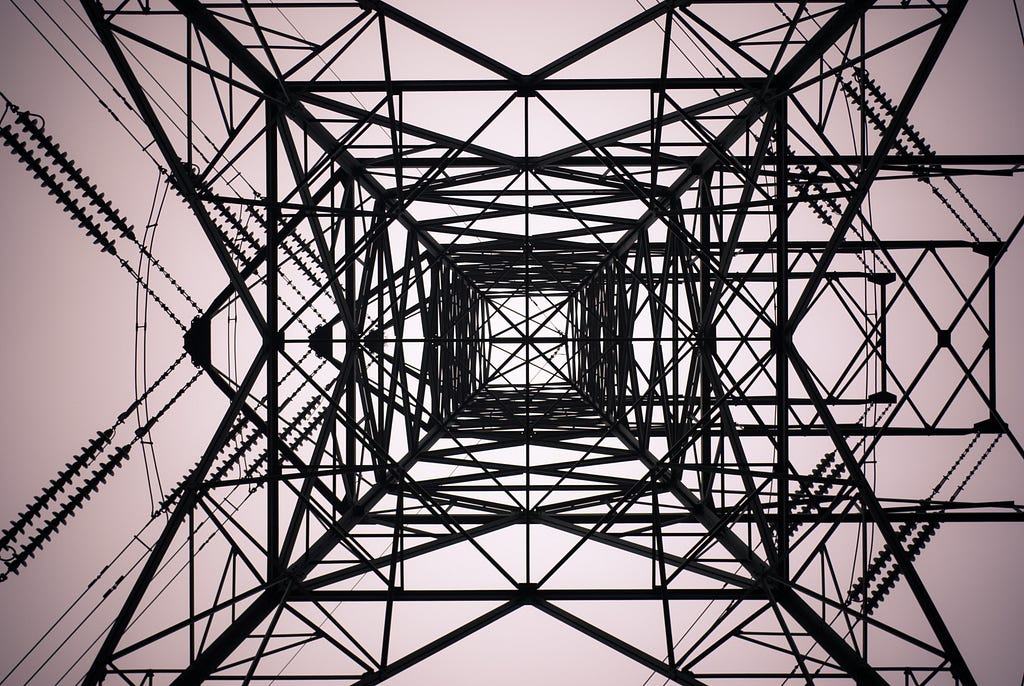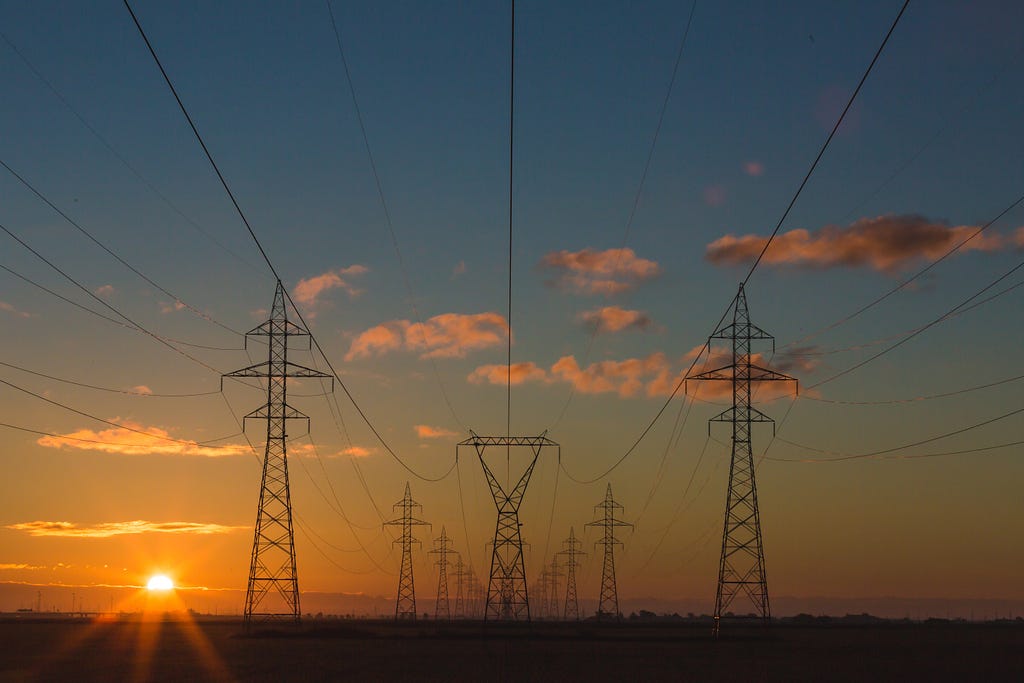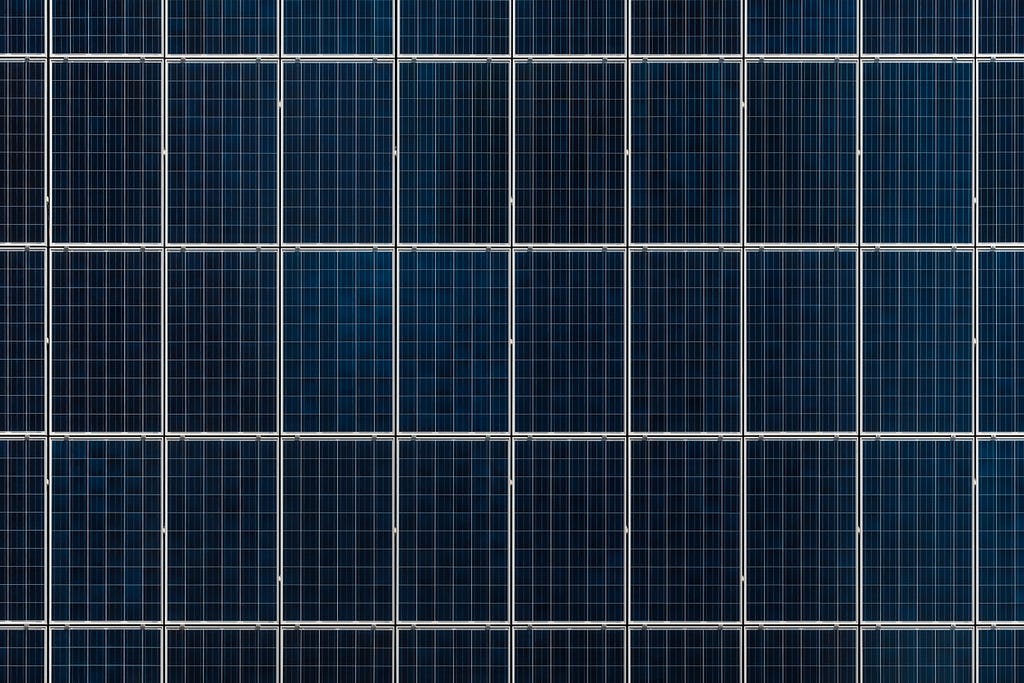Latest news about Bitcoin and all cryptocurrencies. Your daily crypto news habit.
 Photo by Shane Rounce
Photo by Shane Rounce
Our energy system has not changed dramatically for over 100 years. Since the first power station was built in 1882, energy has been a one-way street. Power stations push energy through their vast distribution networks to us, the consumers. Then energy retailers bill us for it. Whilst this centralised system has kept the lights on, our rapidly evolving societies are moving faster than ever. It’s time our energy system caught up — can blockchain be the technological stepping stone to solve the big problems our energy system faces?
Problems With Our Current Infrastructure
1. Energy inefficiencies
Energy goes on quite a journey to get to us. To put it simply, it travels from a power station through complicated distribution networks and finally arrives at our home. It is an essential part of our everyday lives. Studies have shown just how many problems there are along this journey, estimating that 8 to 15% of electricity that is generated at a power station is lost before it reaches us. That’s a lot of money which gets passed on to our energy bills, and a lot of CO2 that is emitted unnecessarily into our atmosphere.
To make matters worse for our grid, areas where large numbers of people are using solar panels to power their homes place huge strains on our current infrastructure. If too much excess energy is pumped into it, a situation known as ‘over voltage’ may occur. This can damage equipment, lead to reliability issues, or even cause safety concerns. Worst of all, this slows the adoption of renewable energy systems and leads to our next problem.
 Photo by Matthew Henry2. Energy and our environment
Photo by Matthew Henry2. Energy and our environment
The global energy sector is responsible for two thirds of all the greenhouse gases we emit into the atmosphere. With another summer of broken heat records across the planet, the energy sector must adapt fast to curb their emissions.
These changes in our environment are much more than just hotter summers. Our natural systems that provide us food, clean water and clean air are under threat. These systems running smoothly are vital for our survival. It has never been more important for our energy system to evolve in response to these environmental challenges that we face.
3. Energy inequality
Energy retailers’ profits continue to rise in parallel with fuel poverty. Take one of the biggest energy retailers in the UK, British Gas. They achieved their highest profit margin ever in 2017. Yet one in ten families in the UK live in fuel poverty.
These retailers do not even own any of the grid infrastructure. Frustratingly, they just compete for the right to send you a bill and monitor your meter usage. They are the quintessential “middle-man”, marking up the price of energy by as much as 100% to cover their costs of running their company. And make plenty of profit while they’re at it.
Our current system is unfair and inefficient. This costs us, the consumers, and our environment dearly. These difficulties have provided us with a spark of technological innovation — blockchain.
Energy Innovations and Blockchain
This exciting technology hopes to move our energy system away from its centralised one-way street structure. It wants to shift our reliance from power stations and energy retailers to something every energy consumer can get behind.
1. Wholesale electricity distribution
Technology is cutting out the middleman — energy retailers. A blockchain startup, Grid+, has selected Texas as the first place to roll out their technology. Consumers can now trade and buy directly from the grid, making traditional energy retailers unnecessary. These savings are passed on to us with energy bills reducing by as much as 38%.
But buying electricity from the grid when you need it, isn’t this a massive inconvenience to our daily lives? Not if you have an internet-enabled hardware device that automatically buys it when you need it. The device Grid+ call the ‘Smart Energy Agent’ becomes even more impressive in homes with battery storage. It buys electricity when it’s cheapest at low demand, stores it in your battery, and then sells it back to the grid when energy is expensive at high demand.
Blockchain technology is now the new middleman, rather than traditional energy retailers hungry for increasing profits.
2. Peer to Peer (P2P) Energy
With the boom in solar panels, people are not just energy consumers anymore — they are also producers. Being both an energy consumer and producer, you are known as a prosumer. If your community has multiple prosumers, P2P energy is about to change everything.
Let’s take Jane. She has a 3 bedroom home and solar panels on her roof. She is a prosumer. Normally, when Jane has any leftover energy from her solar panels, it is sold back to the grid. Due to inefficiencies and middlemen in this process, Jane isn’t making much money.
With P2P energy, Jane can now sell this leftover energy to her neighbour using the blockchain. Because the blockchain acts as the middleman in this transaction, Jane makes more money than she would selling it back to the grid.
What’s even better, it’s cheaper for the neighbour to buy energy from Jane rather than their energy retailer. Jane’s neighbour can support renewable energy even if they don’t have the solar panels to produce it. This is greener and a much more efficient use of electricity as less energy is lost along the journey from power station to home.
Companies like Power Ledger in Australia, and LO3 in Brooklyn, NY are connecting communities in this way — creating micro-grids. Along with savings for both consumers and prosumers, they are also safer. Microgrids can be used as an emergency backup in situations when there are issues with the main grid. Natural disasters like floods, earthquakes and hurricanes can cause service disruptions by affecting centralised grid infrastructure. In such an event, microgrids can sustain the community until the main grid is back online — a life saver in areas prone to natural disaster.
Right now, these microgrids act as a layer on top of our current grid. But P2P blockchain companies expect this later to evolve into larger, more distributed, interconnected microgrids. This means even cheaper rates for the consumer and better profits for the prosumer.
 Photo by Samuel Zeller
Photo by Samuel Zeller
How Does All This Work?
Firstly, it’s not essential that everyone using this technology understands it. After all, how many people using the Internet or contactless payments could explain how these complex systems work behind the scenes to improve our lives?
In a nutshell though, a blockchain is a shared, encrypted ledger that is maintained by a network of computers. These computers verify transactions and data with cryptocurrencies, like Bitcoin and Ethereum, between individual users. Each user can access the ledger, and there is no single authority.
So what does this all mean? The whole point of using a blockchain is to let people who don’t trust each other share valuable data safely. The middleman that normally provides this service is removed. Their profits our taken out of the equation and people using a blockchain safe money. Plus, blockchains are extremely difficult for attackers to manipulate as they use sophisticated math and innovative software rules. So how does this apply to the innovations mentioned?
- With wholesale electricity distribution, the blockchain is used so energy consumers can buy and sell energy directly to the grid in real time (with technology like the “Smart Energy Agent” from Grid+ streamlining the entire process).
- With P2P energy, the blockchain is used so communities can be connected in interlinked microgrids and buy or sell the local renewable power between them using this network.
Where Is Our Energy System Heading?
Blockchain technology has provided wholesale electricity distribution and P2P energy — two exciting innovations with full intention to completely change our current energy system. With the future in sight, consumers will have cheaper, greener choices as to where they get their energy from. Prosumers will have the opportunity to generate an even greater income from their solar panels. Everyone in a community with a microgrid has a backup, in case disaster strikes their main grid.
The road ahead is exciting but there will be many challenges. Government regulation will have to adapt fast to these new technologies and there needs to be political will as well as people power. Progress is more than likely to be hindered by the powerful lobbying interests of traditional energy retailers. But successful small-scale trials are encouraging, and blockchain technology is developing all the time. More creative innovation is needed to overcome these hurdles as technologies scale up to meet the energy demands of not just small communities but entire cities. But it’s out there, and it’s gathering momentum. Just think — Amazon started out by selling a few books…
With well over $1 billion invested in blockchain businesses this year alone and almost half of the world’s top universities offering blockchain courses, there is no doubt the technology is here to stay. We are currently witnessing a dramatic shift in the way we generate, distribute, and consume energy…
More reading from this author:
We Have A Water Crisis. Can Blockchain Technology Save Us?
Climate Change, Blockchain And The Paris Agreement: A New Hope
Time to start a conversation
I want to hear your thoughts. Let me know what you think about blockchain technology innovating our energy infrastructure below.
Blockchain And Energy: Everything You Need To Know. was originally published in Hacker Noon on Medium, where people are continuing the conversation by highlighting and responding to this story.
Disclaimer
The views and opinions expressed in this article are solely those of the authors and do not reflect the views of Bitcoin Insider. Every investment and trading move involves risk - this is especially true for cryptocurrencies given their volatility. We strongly advise our readers to conduct their own research when making a decision.
